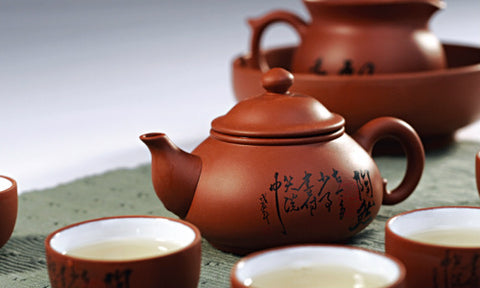News
Spiced Apple Chai Cider
In the middle of winter our thoughts turn to warm drink and a book by the fire. Here is one warm drink that is sure to please!
Ingredients
- 1 cup (250mL) boiling water
- 3 tsps 3 Teas Masala Chai
- ½ cup (125mL) apple cider (hard or soft)
- 1 teaspoon (5mL) sugar, optional
- 2 tablespoons (30mL) whipping cream, optional
- 1 cinnamon stick
Instructions
Steep tea with boiling water for 5 minutes. Add hot apple cider Add sugar and top with whipping cream, if desired. Garnish with a cinnamon stick and grab your favourite book. Enjoy!
Is tea good for your brain?
Recent studies have shown some of the effects of tea on brain function.
- A recent human study examined the effect of the unique tea amino acid L-theanine on attention related task performance. Task performance was measured by tracking electrical activity produced by the brain ( via EEG). The results suggest L-theanine plays a role in processing attention in synergy with caffeine. (1)
- A published randomized human clinical trial found that subjects given a daily supplement with green tea extract and L-theanine extracted from tea experienced improvements in mild cognitive impairments (MCI). (2)
- Caffeine and L-theanine in tea may offer cognitive benefits and improve mental clarity and work performance. A cross-sectional study showed that participants who consumed more tea felt less tired and reported higher levels of subjective work performance. (3)
- A double-blind, placebo controlled crossover study showed that the flavonoid EGCG (found in green tea) was associated with a significant increase in self-rated calmness and reduced self rated stress. This is in keeping with the widespread consumption of green tea for its purported relaxing/refreshing properties.
1. Kelly SP, Gomez-Ramirez M, Montesi JL, Foxe JJ. L-Theanine and caffeine in combination affect human cognition as evidenced by oscillatory alpha-band activity and attention task performance. J Nutr 2008;138:1572S–7S.
2. De Bruin EA, Rowson MJ, Van Buren L, Rycroft, JA, Owen GN. Black tea improves attention and self-reported alertness. 2011. Appetite, 56: 235-240.
3. Bryan J, Tuckey, M, Einöther S.J.L. et al. The relationship between tea and other beverage consumption, work performance and mood. Appetite, 2012. 58 (1), 339–346
4. Scholey A; Downey LA; Ciorciari J; Pipingas A; Nolidin K; Finn M; Wines M; Catchlove S; Terrens A; Barlow E; Gordon L; Stough C Acute neurocognitive effects of epigallocatechin gallate (EGCG). Appetite. 58(2):767-70, 2012 Apr.
Pairing Tea with Food
Here are a few examples to get you started:
White Tea
White tea is subtle so pair it with light tasting foods such as vegetables and white chocolate.
Green Tea
Green tea has a light vegetal/grassy taste so pair it with mild fish or chicken. Salads are also a good choice as is simple fruit like melon
Oolong
Oolongs are more complex and cover a range from light (closer to green tea) to more oxidized (closer to black tea). Try a lighter oolong with seafood or cheese and crackers. Use a more oxidized oolong with grilled salmon or smoked meat
Black Tea
Black tea is more robust and can be paired with spicy foods. Flavored black teas also do well with a sweet dessert.
Follow link to a great chart from the Tea Association of Canada with even more ideas on how you can pair teas with food! Enjoy.
http://www.tea.ca/wp-content/uploads/2014/12/Tea-and-Food-Pairing-Chart_EN.jpg
How to make the perfect cup of Matcha
Matcha is not your average cup of tea! This fine stone ground powder is made from specially grown green tea. The plants are grown under shade which allows them to produce a higher chlorophyll content and a unique flavor.
Matcha is used in the traditional Japanese Tea Ceremony that can last up to 3 hours. There is no need for all that ceremony because you can still enjoy Matcha using a few simple tools in just a few minutes.
Here is a simple way to make your Matcha tea with a bamboo whisk:
Using a bamboo whisk and tea bowl:
- Sift 1/2tsp Matcha into a cup using a small sifter.
- Add 2oz hot water. For best results use water that has been boiled and cooled to 80C (3-5 minutes after boiling if you do not have a thermometer).
- Whisk vigorously with a bamboo whisk in a zig zag motion until the tea is frothy.
- Enjoy your Matcha tea straight from the bowl.
For Matcha Latte use less water and add warm milk after whisking.
Matcha can be enjoyed in many other ways. Experiment and find your own unique way of enjoying this amazing beverage!
Choosing the perfect teapot

Teapots first came into use around the 13th century during the Ming dynasty. The first Chinese teapots were made of purple clay from the Yixing region and are still made in the same way today. These pots are very porous and it is recommended that you use only one type of tea for each pot as the pot will absorb the flavour of that tea. Ceramic teapots first emerged with the European fascination with tea in the 18th century when the East India Company commissioned Chinese to create teapots to their specifications. Ceramic teapots make a good choice as they tend to hold the heat well.
When choosing a pot remember to :
- Chose a pot with a spout that is level with the rim to ensure a dripless pour.
- The handle should be comfortable to use and be insulated from the pot.
- The lid should always have a small hole in it to allow air to escape.
- Most importantly choose a teapot that you enjoy using and makes you happy!
Cold Steeping, perfect for summer!
Energy efficient and simple, cold steeped teas have less bitterness and less caffeine. Unlike "sun tea", where you leave your tea in the sun to brew, there are no food safety concerns with cold steeping. Cold brewing also brings you a cleaner, less astringent cup. Any type of tea can be used but green , white and oolong teas produce the best cups. Herbal fruit teas also do well. Experiment with your own favorite and let us know!
To make cold steeped tea simply add one teaspoon of loose leaf tea per cup of fresh cold water, place in a suitable container and leave in your fridge overnight (at least 8 hours). Strain out the leaves and enjoy!
What's the difference between Green Tea and Black Tea??
All tea comes from the Camellia Sinensis plant. The difference is in how much the leaves are oxidized and processed after they have been plucked. During the oxidation process the leaves undergo chemical reactions that result in the variations of taste and colour. Heating stops the oxidation process.
There are 4 main types of tea:
Green tea may be rolled or processed and then heated quickly to stop oxidization before it truly begins to happen.
White tea is left to oxidize for a very short period before heating. White tea is usually not processed at all.
Oolong tea is partially oxidized and has some of the characteristics of both green and black tea. Oolong leaves may be rolled or twisted. Oolong are very aromatic and full of flavour.
Black tea is the most common type of tea in North America. It is fully oxidized and results in a full rich flavour and amber liquor.
Herbal teas are not made from the Camellia Sinensis plant but are infusions of herbs, leaves, flowers, fruit or other plants.
Tea Storage 101: Or how to make your quality loose leaf tea stay as fresh as possible for as long as possible!
Resist the temptation of storing your tea in a clear glass or plastic container, light will degrade your tea quickly.
Keep your tea in your pantry or cupboard and away from any heat source such as your stove or toaster. There is some evidence that storing tea in your refrigerator or freezer can extend the life of your tea, however, be sure to let the tea warm up to room temperature before opening as the cold leaves will attract moisture and degrade your tea. As with any other organic matter, tea, when wet, can create mold and ruin the taste of your cuppa!
Store your tea away from spices or other strong odors. Tea (especially green tea) will take on any odors that it is exposed to.
Keep these tips in mind when you store your tea and you will have the best tasting tea with ever cup!
Cooking with Tea
Masala Chai Cranberry Sauce
Ingredients:
1 cup sugar
1 cup steeped 3 Teas Masala Chai tea
1 12-ounce package Fresh or Frozen Cranberries
Directions:
Combine sugar and tea in a medium saucepan. Bring to boil; add cranberries, return to boil. Reduce heat and boil gently for 10 minutes, stirring occasionally. Cover and cool completely at room temperature. Refrigerate until serving time. Makes 2 1/4 cups.
Easy Mulled Wine
Ingredients:
2/3 cup steeped 3 Teas Organic Orange Pineapple Herbal tea
1/3 cup red wine
1 Cinnamon stick
Directions:
Combine first two ingredients, garnish with cinnamon stick and slice of orange and serve in your favourite cup. Delicious!
Rooibos Butternut Squash
- 3 tablespoons unsalted butter
- 1 tablespoon plus 1 1/2 tsp. 3 Teas Spiced Rooibos tea leaves
- 2 medium-large butternut squashes
- Drizzle of olive oil for baking sheets
- 1 teaspoon fine sea salt
- Pepper
- 2 tablespoons chopped fresh chives
Preparation
- Preheat oven to 425°. Heat a small frying pan over medium heat and add butter and 1 tbsp. tea. When butter foams, remove from heat, cover, and let infuse 10 minutes. Strain butter through a fine sieve; discard tea.
- Meanwhile, using a large, sturdy, sharp knife, cut off stems and seedless "necks" of squashes (save seeded parts for another use). Stand each neck on a flat side and slice peel off with 7 or 8 cuts, leaving a kind of octagonal shape. Cut necks into 1/2-in. slices. Lightly oil 2 baking sheets and place squash, slightly separated, on sheets.
- 3. Pulverize remaining 1 1/2 tsp. tea leaves (if already fine, skip this step). Mix with salt.
- 4. Brush infused butter onto tops of squash slices, then season with pepper and rooibos salt. Bake until very soft, about 25 minutes. Transfer to a platter and sprinkle with chives.
Tea Facts!
Legend has it that tea was first discovered by the Chinese Emperor Shen Nong, who was boiling water for drinking one day in 2737BC when a tea leaf happened to fall into his pot. By the time of the Shang dynasty (1766-1050BC) tea was being consumed in Yunan for it's medicinal properties.
Tea spread to Japan around 1191 when a Zen priest brought tea bushes to Japan and planted them in Kyushu. It was not until the seventeenth century that tea was introduced to Europe by the Dutch. Only green tea had been consumed until this time but it was found to spoil easily on the long trip tin damp ships to Europe. The Chinese realized that if the tea were darkened, fired and bake dried it would survive the trip without spoiling. Thus black tea was introduced to the western world!
Did you know?
• Tea is the second most consumed beverage in the world after water.
• The best tea is produced on mountainsides between the Tropic of Capricorn and the Tropic of Cancer.
• The top tea producing countries are:
China 35%
India 21%
Kenya 8%
Sri Lanka 7%
Turkey 5%
No matter where your tea comes from you can be assured that 3 Teas only sells the most Terrific Tasting Tea!

